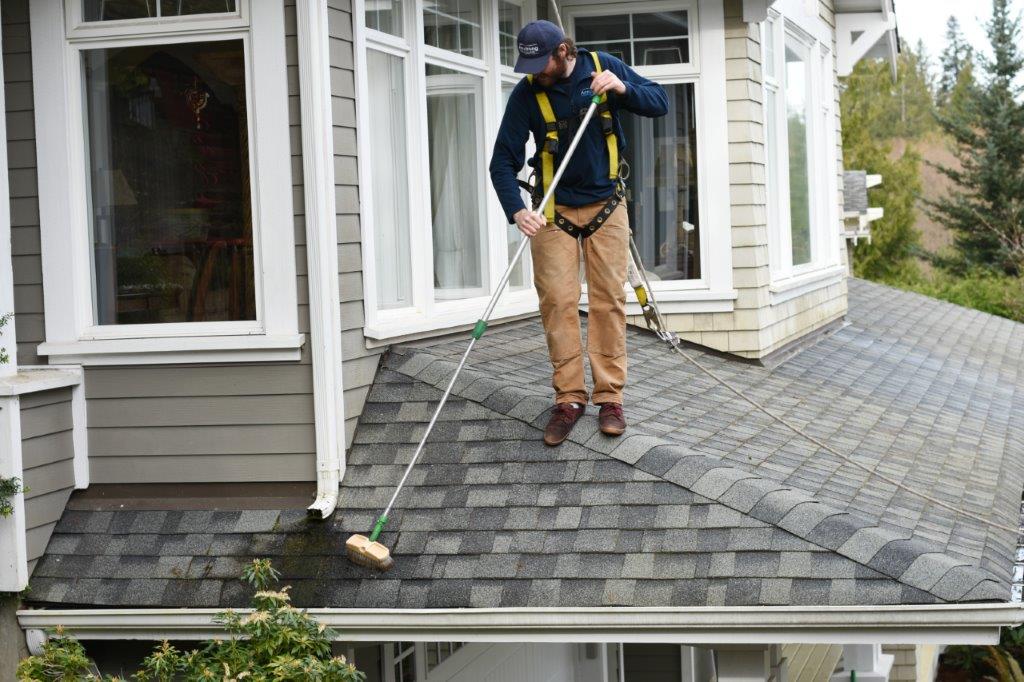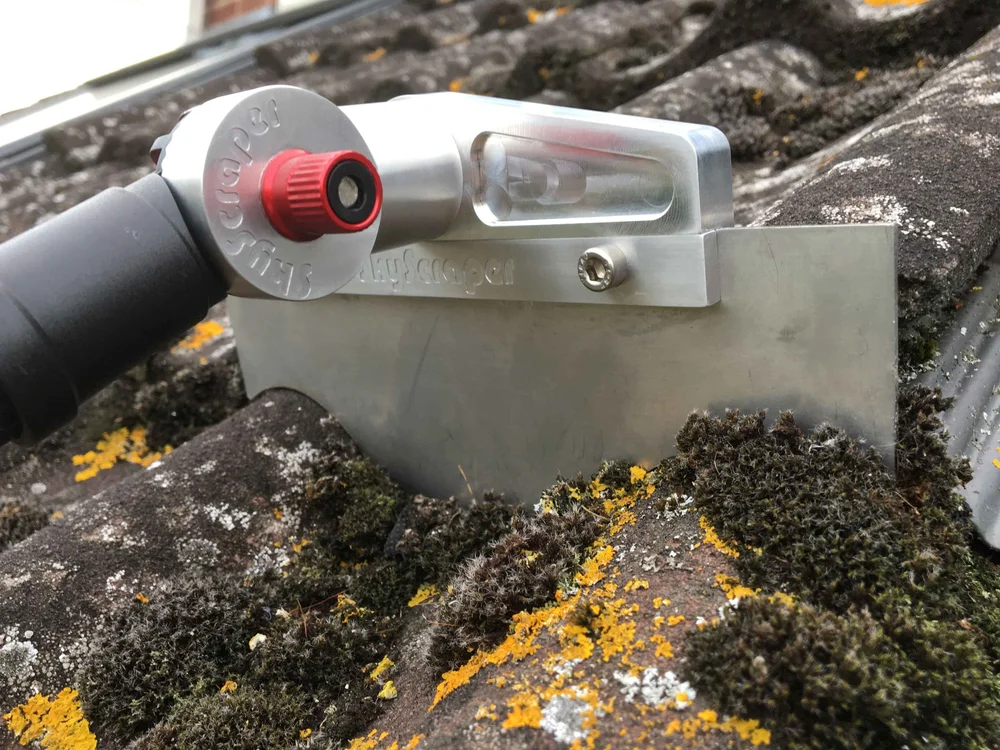How Moss Removal Victoria Services Help Prevent Water Damage and Rot
Necessary Tips for Successful Moss Elimination to Improve Your Outside Space
Moss can be a relentless problem in outside areas, usually thriving in shaded and damp locations. Comprehending the underlying reasons for moss development is essential for reliable removal and avoidance. Recognizing the right methods and tools is needed for tackling this issue. Furthermore, maintaining a healthy outdoor setting can greatly decrease the chances of moss returning. Checking out efficient techniques can transform overlooked areas right into vivid landscapes. What steps can one require to assure long lasting results?
Comprehending the Causes of Moss Growth
Although moss can include an attractive top quality to landscapes, its development frequently indicates underlying issues in the setting. Usually, moss prospers in moist, shaded areas where sunlight is restricted, developing an excellent environment for its proliferation. Poor drainage and compressed dirt add significantly to its spread, as these conditions preserve wetness and inhibit appropriate water overflow. Furthermore, acidic dirt can favor moss over preferred plants, resulting in inequalities in the community. High humidity and consistent rains even more intensify the problem, enabling moss to prosper where other greenery battles. Absence of competitors from yard grasses can also help with moss development, specifically in ignored areas. Generally, understanding the causes of moss growth is crucial for effective management and elimination, ensuring that exterior areas can return to their desired aesthetic and eco-friendly feature. Dealing with these underlying issues is important to prevent future moss infestations.
Determining Locations Prone to Moss Buildup
Recognizing locations susceptible to moss build-up is vital to reliable administration and prevention. Moss prospers in atmospheres that perspire, shaded, and have inadequate water drainage. Locations under trees or dense bushes typically experience reduced sunshine, developing excellent conditions for moss growth. Furthermore, areas with compressed dirt, such as pathways or greatly trafficked grass, may preserve moisture, more advertising moss proliferation.
In addition, badly draining pipes surfaces like concrete or asphalt can additionally come to be moss hotspots, particularly in shaded spots. Property owners must frequently inspect their outside areas, looking for signs of moss on roofings, patios, and garden beds. Identifying these areas enables positive steps to be taken, such as improving sunlight direct exposure, boosting water drainage, or adjusting landscape design. By acknowledging these susceptible areas, individuals can better prepare for and stop future moss issues, eventually leading to a much healthier and extra visually pleasing exterior room.

Reliable Moss Removal Techniques
Eliminating moss efficiently calls for a mix of strategies customized to the certain surfaces and conditions where moss has held. For difficult surface areas such as driveways and outdoor patios, a stress washing machine can be highly reliable, blasting away moss without damaging the underlying material. When taking care of softer surfaces like roofings or wood decks, a gentler method is essential; using a soft-bristle brush and a mixture of vinegar and water can assist displace moss without triggering injury.

Preventing Future Moss Growth
To avoid future moss growth, it is vital to boost sunlight exposure and boost drain systems. Increasing sunlight can discourage moss from growing in shaded locations, while reliable drainage minimizes wetness buildup. Applying these approaches can create a setting much less conducive to moss proliferation.
Boost Sunlight Direct Exposure
Exactly how can raising sunshine exposure efficiently battle future moss growth? By allowing more sunshine to reach shaded areas, property owners can significantly prevent the ideal problems that moss prospers in. Moss normally embellishments in dark, moist environments; therefore, enhancing light availability can interrupt its life process. Strategic tree cutting or removal might be required to improve sunlight in impacted locations. In addition, using reflective surface areas, such as light-colored rocks or patio area materials, can even more enhance light penetration. Frequently checking and keeping yard health also ensures that sunshine can get to the ground effectively. Executing these actions not just reduces the likelihood of moss regrowth however likewise promotes a much healthier, more vivid outdoor space.

Improve Water Drainage Systems
Effective drain systems play an essential role in preventing future moss development in property landscapes. When water builds up in particular locations, it produces a moist environment for moss expansion. To enhance drainage, homeowners ought to assess their landscape for low-lying locations and take into consideration mounting French drains or swales to reroute excess water. Regular maintenance, such as removing downspouts and rain gutters, will additionally advertise effective water circulation. In addition, guaranteeing that soil is well-aerated can improve absorption and lower water pooling. Growing drought-resistant plants can further alleviate moisture retention, producing a negative setting for moss. By attending to drainage concerns proactively, homeowners can substantially decrease the possibility of moss taking hold and keep a much healthier, extra dynamic outdoor space.
Selecting the Right Products for Moss Control
When selecting items for moss control, home owners have to consider the advantages of all-natural versus chemical options. Each option supplies potential downsides and distinctive benefits, influencing efficiency and ecological impact. Additionally, comprehending various application techniques can assure perfect lead to moss removal efforts.
All-natural vs. Chemical Solutions
While both natural and chemical services use feasible options for moss control, the option commonly relies on individual choices, environmental considerations, and the extent of the moss issue. Natural remedies, such as vinegar, baking soft drink, or salt, are usually favored for their Click This Link eco-friendliness and low poisoning. They can properly prevent moss development without harming bordering plants or dirt wellness. Conversely, chemical solutions often tend to be a lot more potent and can offer quicker outcomes, making them ideal for serious invasions. However, they might pose dangers to non-target organisms and the setting if mistreated. Ultimately, the decision in between chemical and all-natural items should mirror a balance of performance, safety and security, and the total effect on the exterior space.
Application Techniques Explained
Picking the appropriate items for moss control includes understanding the different application methods readily available. Property owners can pick in between granular, fluid, and foam products based upon their imp source preferences and the certain location influenced by moss. Granular options are usually topped the moss-infested location, enabling gradual absorption and performance. Liquid therapies, commonly applied with a sprayer, deal immediate coverage and infiltration, making them appropriate for larger locations. Foam products provide targeted application, which can be advantageous for elaborate surfaces like roof coverings or wall surfaces. Furthermore, aspects such as climate condition and surface kind ought to be taken into consideration when selecting a method. Eventually, recognizing these methods makes it possible for efficient moss control, ensuring a healthier and a lot more appealing outside room.
Preserving a Healthy Outdoor Room After Removal
After moss removal, it is necessary to implement reliable maintenance techniques to assure the outdoor area remains dynamic and healthy. Routine yard care is essential; mowing at the appropriate height advertises lawn wellness and prevents moss regrowth. In addition, ensuring adequate sunshine reaches the lawn and garden locations is crucial, Read Full Report as moss prospers in shaded atmospheres.
Dirt health and wellness must also be focused on. Testing dirt pH and nutrient levels can direct appropriate changes, fostering a robust community. Appropriate drainage is one more key factor; addressing any merging water can stop moss from restoring itself.

Often Asked Concerns
Can Moss Be Beneficial for My Yard or Landscape?
Moss can be helpful for yards and landscapes by supplying ground cover, retaining wetness, and enhancing dirt top quality. It also promotes biodiversity, offering environment for little organisms and boosting the general visual appeal of outdoor areas.
For how long Does It Take for Moss to Regrow After Removal?
Moss can grow back within a few weeks to several months after removal, depending on environmental problems like shade, soil, and wetness quality. Routine upkeep is necessary to avoid rapid reestablishment in affected areas.
Is Moss Elimination Unsafe to Bordering Plants or Wildlife?
Moss removal can possibly hurt surrounding plants and wildlife, specifically if chemical therapies are utilized. Hands-on elimination, nevertheless, usually postures very little threat, though care must be required to stay clear of troubling neighboring plant life and habitats during the procedure.
What Season Is Ideal for Moss Removal?
The most effective time for moss elimination is normally in early springtime or late autumn. Throughout these seasons, temperature levels are modest, and moisture degrees can help assist in the elimination process while lessening anxiety on surrounding plants.
Exactly How Can I Inform if Moss Is Just dormant or dead?
To determine if moss is dormant or dead, one need to check its color and appearance. Healthy and balanced moss shows up green and vibrant, while dead moss often tends to be brown and breakable, lacking dampness and flexibility.
Typically, moss prospers in wet, shaded areas where sunshine is limited, developing an optimal environment for its proliferation. Getting rid of moss successfully needs a combination of strategies tailored to the specific surface areas and conditions where moss has taken hold. Raising sunlight can deter moss from prospering in shaded locations, while effective drainage minimizes dampness buildup. By enabling more sunlight to reach shaded areas, home owners can greatly impede the suitable conditions that moss prospers in. While both chemical and natural solutions offer sensible choices for moss control, the choice commonly depends on specific preferences, ecological considerations, and the seriousness of the moss trouble.